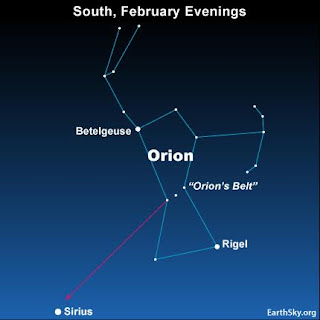 Yesterday I announced my intent to spend future Tuesdays featuring the best of my 14 years of posting this blog. As Wednesday is my sci-tech day, I will provide a similar alert indicating what science topics I will focus on over next few days and weeks:
Yesterday I announced my intent to spend future Tuesdays featuring the best of my 14 years of posting this blog. As Wednesday is my sci-tech day, I will provide a similar alert indicating what science topics I will focus on over next few days and weeks:
- What is a star? Part 2 will feature dwarf stars, which are relatively small, and rest somewhere between stars and large planets, from a fascinating Scientific American article.
- Chemistry's quantum future. Many products developed by industry were pure accidents, like teflon. Chemistry is nearing a phase of being able to bypass this thing called serendipity.
- A possible solution to global warming: the answer might be within our mantle, as seen in a remote desert of Oman.
- Virus scoreboard: what can we expect in the future.
- A new understanding of Alzheimer's: is microglia the real target?
- While only 1% of us stutter, as I once did, we getting closer to better understanding and curing this problem.
- Are hypersonic weapons over-hyped?
- There are almost 10,000 types of birds. Which one is most prevalent? The House Sparrow, with 1.1 billion, according to a which study analyzed all the data in the world and came up with that answer. One problem, for as of April 2022, there are 25.9 billion chickens. They produced 112 billion eggs for consumption. Did you know that the average age of a chicken in your market is 40 days?
Astro-scientists have been around for a long time and seem to know a lot about stars. Yet, the science keeps changing.
- One definition of a star is an astronomical spheroid of plasma held together by its gravity.
- You start with a Protostar, a collection of gas that has collapsed down from a giant molecular cloud. This phase lasts 100,000 years to form a T Tauri Star, which in 100 million years evolves into a Main Sequence Star. 90% of all stars are in that phase, and their size ranges from one-tenth to 200 times the mass of our sun. Note that mass and diameter are not the same, for some stars are "fuzzy." Some do not quite become stars and are known as Brown Dwarfs.
- Most stars are around 75% hydrogen and 25% helium, plus other elements. Our Sun is 71% hydrogen and 27% helium.
- Our Sun is a yellow dwarf star.
- It is 93.55 million miles away from Earth.
- The next nearest star is Proxima Centauri, a Red Dwarf Star, only 4.2465 light years away, or 25 trillion miles.
- While it would take 8.3 minutes for light to get from Earth to the Sun, it would take 4.2465 years to get to Proxima Centauri.
- Or, a jumbo jet would take 19 years to reach the Sun from our planet. Thus, at this speed, if there is sufficient energy available, it would take a little more than 5 million years to reach Proxima Centauri. Homo sapiens, us, only began to appear 0.3 million years ago.
- All stars use fusion of hydrogen to produce energy and mostly helium.
- There are more than 100 billion stars in our Milky Way Galaxy. But there are more than 100 billion galaxies in the Universe. Multiplying them will give you 10 to the 22nd power stars total. However, some estimates go up to 10 to the 24th power.
- There are seven main spectral types of stars:
- O (Blue) (10 Lacerta)
- B (Blue) (Rigel)
- A (Blue) (Sirius)
- F (Blue/White) (Procyon)
- G (White/Yellow) (Sun)
- K (Orange/Red) (Arcturus)
- M (Red) (Betelgeuse)
- I should stop here, but this is another star characterization system providing different details:
- Hot Blue Stars (type O) are much more massive than our sun, and burn hotter for a short lifetime, expiring in just a few million years. An example is Spica in the constellation of Virgo. Look for the Big Dipper and following the handle, you will first see Arcturus (a Red Giant Star), then Spica. An extraordinary one is Sirius:
- Which is binary star with a dim white dwarf partner.
- Is only 8.6 light years away.
- Is the brightest star in the sky and twice so than Canopus, and will remain the easiest star to see for another 210,000 years, when Vega becomes #1.
- Red Dwarf Stars are much smaller than our sun and burn cooler, thus living longer, typically hundreds of billion years, and maybe 10 trillion. This is the most common type of star, but as they're so dim, are hard to see. Two nearer ones are Proxima Centauri and Barnard's Star. The Search for Extraterrestrial Intelligence has the highest probability of finding interesting exoplanets around this type of star.
- Red Giant Stars have run out of hydrogen, and thus burn hydrogen outside the core and other elements like helium in the core, making the star swell up, leaving a puffy bright object so they can be seen. Some have enlarged by a factor of 100.
- Red Super Giant Stars are the biggest known. Antares in the constellation Scorpius is one, and another is Betelgeuse (right), 1400 times larger than our Sun, forming the shoulder of Orion. Mu Cephei is 100,000 times brighter than our Sun. These stars will soon disintegrate.
- Blue Giant Stars are out of the main sequence and rare, with short lives. Typical is Alcyone in the constellation Taurus.
- Blue Supergiant stars are more massive than the Sun and fall into a mass range from 10 to 100 solar masses. They start as type-O and early type-B, and leave the main sequence only in a few million years by running out of hydrogen.
- Yellow dwarfs are of spectral type G, with our Sun a good example. 10% of all stars. They become Red Giants as hydrogen is depleted.
- Orange Dwarfs are K-type and are prime for extraterrestrial life because there is a lot less UV radiation, which destroys DNA. They remain stable for 30 billion years, compared to G-types like our Sun, which are good for only 10 billion years. They are four times as common as G stars.
- White Dwarfs have completely run out of fuel in its core. Fusion has stopped and the star has collapsed. It will just cool down, taking hundreds of billions of years, so none has yet reached its end, as the Universe is not quite yet 14 billion years old. White Dwarfs are typically the size of Earth, or a little larger. They are thus small with a lot their light in the ultraviolet, and are thus difficult to see. One happens to be orbiting the brightest star in the sky, Sirius, found in the Canis Major constellation.
- Neutron Stars are the collapsed cores of massive stars (10 to 29 solar masses), which have been compressed even smaller than white dwarfs after a supernova explosion. Composed entirely of neutrons with no electric charge. What has happened is that protons and electrons were crushed together to form neutrons.
- Black Holes are the end product of a supernova of the most massive stars. Even light cannot escape. There are different types. Supermassive black holes found at the center of galaxies may be a billion times more massive than a typical black hole. Examples are Cygnus X-1 and Sagittarius A.
-






















Comments
Post a Comment